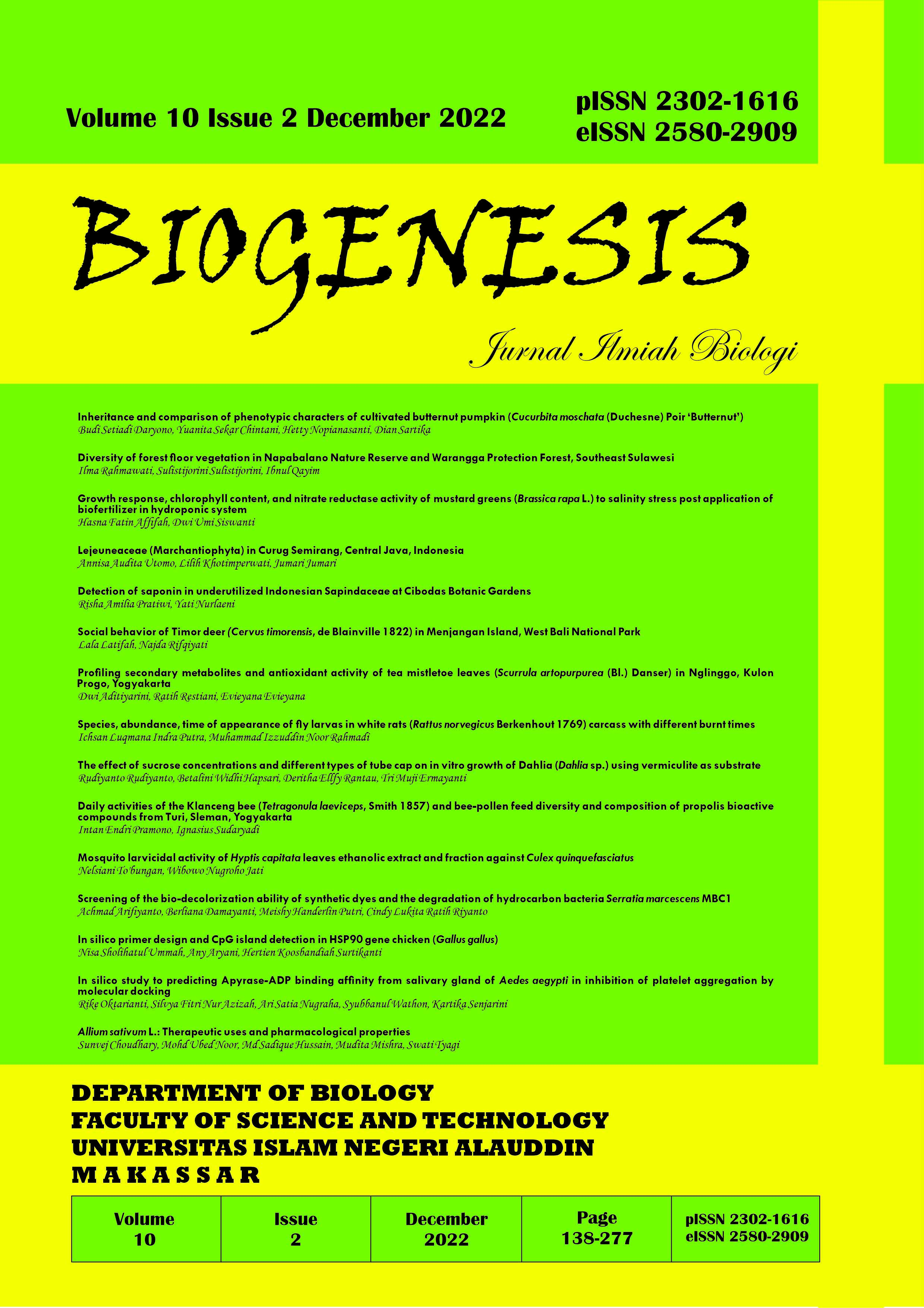Screening of the bio-decolorization ability of synthetic dyes and the degradation of hydrocarbon bacteria Serratia marcescens MBC1
Abstract
Humans are inseparable from using hydrocarbons, including fossil fuels, dyes, and oleochemical products. This has frequently resulted in a high possibility of waste spills polluting the environment. A biological approach using microbes was used to facilitate many of these countermeasures. This study aimed to determine the ability of the bacterium Serratia marcescens MBC 1 isolate as a biodegradation agent for various hydrocarbons and a bio-decolorizing agent for synthetic dyes. The bacterial growth media used were solid and tryptic soy broth. Methylene blue, congo red, methyl red, methyl orange, and crystal violet were synthetic dyes at a concentration per million. Within 7 days, several synthetic dyes tested showed decolorization. Methylene blue has the fastest decolorization time, taking just 24 h. The lipase index method was used to assess the propensity of hydrocarbons to degrade qualitatively. Kerosene had the highest lipolytic index at 6.31, followed by used cooking oil at 5.48 index, used lubricant at 5.37 and diesel at 3.63 index. Quantitative and comprehensive in-depth testing of the potential achievements of this initial test will be used in solving environmental problems that may occur further, especially related to the impact of the use of synthetic dyes.
Copyright (c) 2022 Achmad Arifiyanto, Berliana Damayanti, Meishy Handerlin Putri, Cindy Lukita Ratih Riyanto

This work is licensed under a Creative Commons Attribution 4.0 International License.
COPYRIGHT AND LICENSE STATEMENT
COPYRIGHT
Biogenesis: Jurnal Ilmiah Biologi is published under the terms of the Creative Commons Attribution license. Authors hold the copyright and retain publishing rights without restriction to their work. Users may read, download, copy, distribute, and print the work in any medium, provided the original work is properly cited.
LICENSE TO PUBLISH
1. License
The use of the article will be governed by the Creative Commons Attribution license as currently displayed on http://creativecommons.org/licenses/by/4.0.
2. Author’s Warranties
The author warrants that the article is original, written by stated author/s, has not been published before, contains no unlawful statements, does not infringe the rights of others, is subject to copyright that is vested exclusively in the author and free of any third party rights, and that any necessary written permissions to quote from other sources have been obtained by the author(s).
3. User Rights
Under the Creative Commons Attribution license, the users are free to download, reuse, reprint, modify, distribute and/or copy the content for any purpose, even commercially, as long as the original authors and source are cited. No permission is required from the authors or the publishers.
4. Co-Authorship
If the article was prepared jointly with other authors, the corresponding author warrants that he/she has been authorized by all co-authors, and agrees to inform his/her co-authors of the terms of this statement.
5. Miscellaneous
Biogenesis: Jurnal Ilmiah Biologi may conform the article to a style of punctuation, spelling, capitalization, and usage that it deems appropriate. The author acknowledges that the article may be published so that it will be publicly accessible and such access will be free of charge for the readers.


